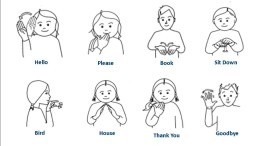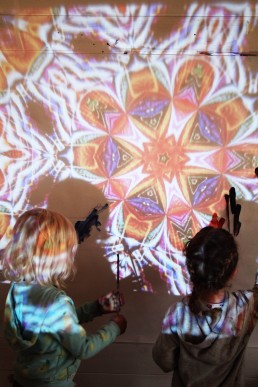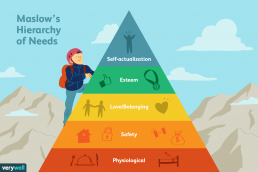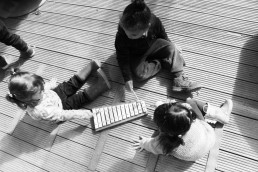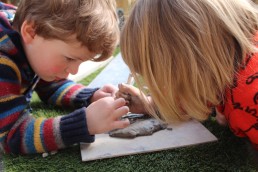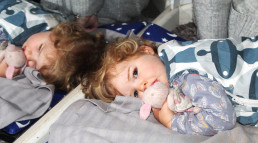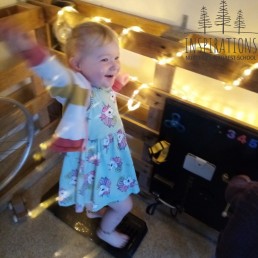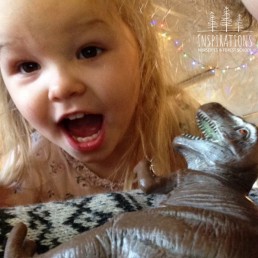Other Ways to Communicate
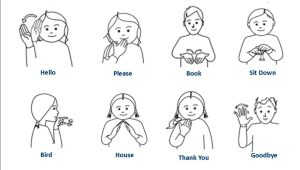
When we talk about communication people often only think about speech, but there are lots of different ways to communicate. Eye contact, body language, facial expressions, gestures, and drawing and writing are daily tools we might use for sharing information.
At Inspirations we follow the Reggio Emilia approach, where one of our key principles is the ‘hundred languages of learning’. The principle refers to communication and the one hundred ways children can express and process the world around them. It provides children opportunities to engage through arts and media, light and shadow and music.
At Inspirations we implement this approach through our daily sessions. The pre-school children decide where they would like to go at choosing times. They may choose to stay in the yurt and outdoor classroom, where the environment is carefully set up by trained staff which use the children’s interests to extend their learning, or they may decide to go off site. Our child-led curriculum provides forest school and art studio workshops twice a day, for two hours. Working in small groups in the art studio ensures that the children can work intimately on projects, expressing their thoughts and ideas through a diverse range of mediums. The forest school sessions provide a breadth of natural resources for the children, and with the guidance from trained staff, a world of beauty, connection, movement and autonomy.
Communicating in all the different ways may come easier to some people than others and some may find them all challenging. Some people may have conditions which can affect the way they communicate. For example, someone who is autistic will often have difficulties when it comes to communicating, especially in social situations. Some people struggle to verbally communicate so will need to learn other non-verbal methods.
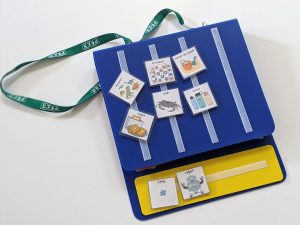 In our nursery each room is supplied with visual aids. This picture-based resource enables babies and children that are preverbal to interact with us. Visuals provide good support to a verbal instruction and help children to understand and make connections. When necessary, we also use Boardmaker which is a software often used across Leeds to support children with Special Educational Needs and Disabilities (SEND) as well as children with English as an additional language. Using resources that they may use when they move on from us is important for consistency. Some children may need PECS, which is a Picture Exchange Communication System. This is a unique communication tool using Boardmaker to enable children to communicate their wants and needs. The programme involves another person acting as the communicative partner, responding to the child's requests. It teaches children that communication is an exchange and how to put words together to form a sentence.
In our nursery each room is supplied with visual aids. This picture-based resource enables babies and children that are preverbal to interact with us. Visuals provide good support to a verbal instruction and help children to understand and make connections. When necessary, we also use Boardmaker which is a software often used across Leeds to support children with Special Educational Needs and Disabilities (SEND) as well as children with English as an additional language. Using resources that they may use when they move on from us is important for consistency. Some children may need PECS, which is a Picture Exchange Communication System. This is a unique communication tool using Boardmaker to enable children to communicate their wants and needs. The programme involves another person acting as the communicative partner, responding to the child's requests. It teaches children that communication is an exchange and how to put words together to form a sentence.
In our baby rooms we use Makaton during singing times and for other frequent words such as ‘more’ or ‘drink’. Makaton involves signing key words, using a spoken word at the same time. Although it is not an official form of signing, it is based on signs used in the British Sign Language. Makaton was developed for very young children with special needs or other communicative challenges. It is helpful for someone who can hear but has difficulties with communication as it uses symbols, verbal words and hand signs.
Kayleigh Woolger
Exploring Pattern in the Art Studio
This week in the Art Studio has had a child led focus on pattern, but how did we get there? Last month we found a butterfly on the decking that was no longer alive. The children shared ideas on what might have 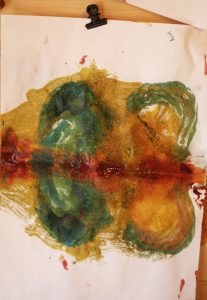 happened? 'It got stung by a wasp!' 'It was eaten by a fox!'
happened? 'It got stung by a wasp!' 'It was eaten by a fox!'
Whilst they came to their own conclusions we brought the butterfly into the Art Studio for a close examination. Out came all the research books as we identified it as a 'Speckled Wood'. The butterfly inspired some drawings, which lead onto paintings with particular focus on the wing patterns and colours.
This naturally lead onto art work and printing techniques by folding the paper to make prints of butterfly wings as we learnt a new word 'Symmetrical'. Their symmetrical patterns progressed and this interest strayed away from the butterfly and lead onto pattern within art using various techniques.
This week we took our pattern painting onto a large scale with the added media of light and shadow as a kaleidoscope was projected onto the wall. We also used clay to create pattern by imprinting beads and various other loose parts.
The Art Studio as well as being a Reggio Inspired place to explore project based learning is also a space for our children to explore new surroundings and new friendships in smaller groups. For some it is their space to build with the magnets, notice new books, experiment with different art materials and explore shadows on the projector. It is a space that can be quiet, a space that can be loud, where we play instruments and sing with the ukulele, and a space with provocations, a space that is rearranged whenever new interests emerge. With between 6 and 8 children in each session it can be the perfect opportunity to hear the children's voices which guides our planning.
Here's some of this weeks photos from the Art Studio.
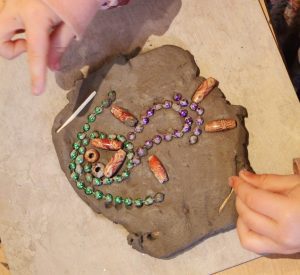

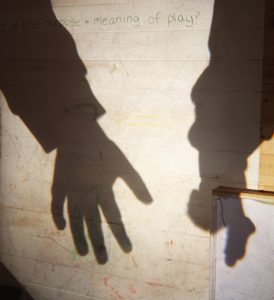
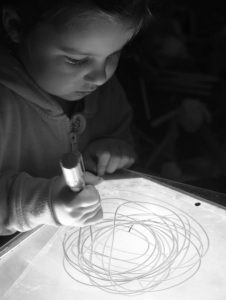
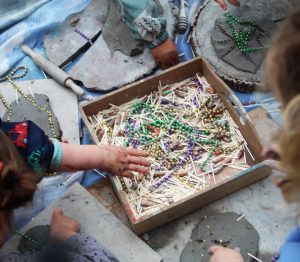
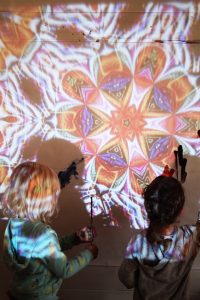

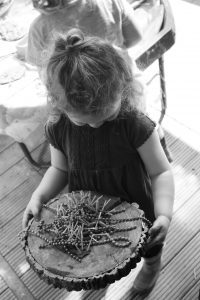
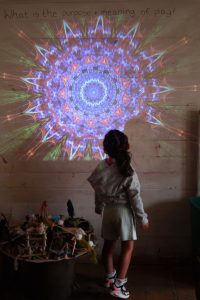
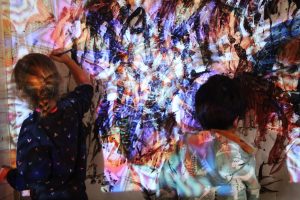
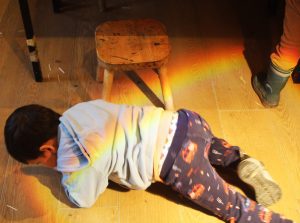
Transitions Within Nursery
Once that blissful Maternity leave you have just shared with your little one draws nearer to an end and the dreaded time comes to go back to work, beginning the transition process in to a Nursery, childminder or Nanny starts and it can be a big and daunting step for you and your little one. All sorts of emotions will come with this as you will no doubt be worried, sad, nervous, and anxious about leaving your child for the first time. However please be assured the settling in process supports you and your child to overcome these negative emotions and instead, make you feel happy, excited and reassured about this next milestone.
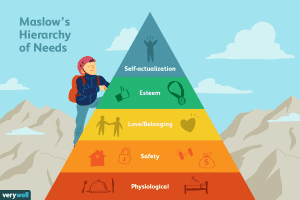 Young children starting a Nursery need support to enable them to adjust to a temporary separation from their family. Maslow’s Hierarchy of Needs demonstrates that children need to feel as safe, comfortable, and secure within the environment before they are able to move on to any other learning opportunities. Building a close bond with their Key Worker and the other Educators is particularly important so that they know they have someone to comfort them and make them smile when they are feeling a little sad. We aim to provide as much continuity and care as possible.
Young children starting a Nursery need support to enable them to adjust to a temporary separation from their family. Maslow’s Hierarchy of Needs demonstrates that children need to feel as safe, comfortable, and secure within the environment before they are able to move on to any other learning opportunities. Building a close bond with their Key Worker and the other Educators is particularly important so that they know they have someone to comfort them and make them smile when they are feeling a little sad. We aim to provide as much continuity and care as possible.
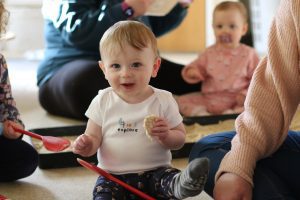 As children develop from birth throughout childhood this change involves a process for them to adapt their thoughts, feelings and behaviours to meet new expectations and even though this blog focuses on Transitions in to Nursery and between room bases, by the time they reach school age, they will more than likely of experienced more than just these transitions in their life. Depending on circumstances the child may be forced to attend more than one setting during the week and one of the big transitions they face is school. Next weeks blog will focus on transitions to school.
As children develop from birth throughout childhood this change involves a process for them to adapt their thoughts, feelings and behaviours to meet new expectations and even though this blog focuses on Transitions in to Nursery and between room bases, by the time they reach school age, they will more than likely of experienced more than just these transitions in their life. Depending on circumstances the child may be forced to attend more than one setting during the week and one of the big transitions they face is school. Next weeks blog will focus on transitions to school.
The Transition to Nursery is like a journey and takes time, preparation and planning. It is important to us that Parents and the Educators work together to make the process as smooth as possible.
The Procedure at Inspirations is as follows-
Under 2's
- A phone call is made to parents, by either the room leader or the Deputy room leader 4-6 weeks prior to the start date and a discussion is had to book in the home visit and settling in visits. It is also a chance to have a chat and ask any questions you may feel unsure about.
- Home visit 3-6 weeks prior to start date (applies to 2-year funded children also)
- Transition visits in to setting 1-2 weeks leading up to first day (1 x 1 hour with Parent, 1 x 1 hour on own and 2 x long visit (3-4 hours) over sleep and lunch or lunch and sleep depending on routine at time)
During these periods of settling in, we aim to share information and build up a picture of the child’s starting points, give a parent pack which will show pictures of the room they will start in along with pictures of the staff (identifying key worker and what their role is) and an overview of the daily routine. We give a parent handbook, check through paper work and talk about/document the routine they are currently following at home. We introduce their Key Worker and discuss any other information you feel relevant. It is also chance to speak about any allergies or dietary requirements
From 2-3 Years and Older
- A phone call is made to parents, by either the Room Leader or the Deputy 4-6 weeks prior to the start date and a discussion is had to book in the settling in visits. It is also a chance to have a chat and ask any questions you may feel unsure about.
- Transition visits in to setting 1-2 weeks leading up to first day (1 x 1 hour with Parent, 1 x 1 hour on own and 1 x long visit (3-4 hours) over lunch or tea
During these periods of settling in, we aim to share information and build up a picture of the child’s starting points, give a parent handbook, check through paper work and talk about, document the routine they are currently following at home. Introduce Key Worker and discuss any other information you feel relevant. It is also chance to speak about any allergies/dietary requirements
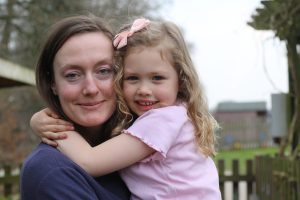 The procedure for room transitions is the same however, the conversations and planning happens between the Room Leaders, and the Key Worker attends the first visit with them. The Key Worker completes a transition form and takes this through on the first visit, this indicates starting points for the child and any other information that needs to be passed on.
The procedure for room transitions is the same however, the conversations and planning happens between the Room Leaders, and the Key Worker attends the first visit with them. The Key Worker completes a transition form and takes this through on the first visit, this indicates starting points for the child and any other information that needs to be passed on.
The impact of our procedures has shown us that the time given for them to settle in before starting is more than sufficient and during this time they have began to familiarise themselves with the environment and the Educators, in particular their new Key worker. However, if there is a chance it hasn’t gone as planned, we can offer additional support by allowing more settling in visits.
All this ground work to ensure smooth transitions helps create the right environment for your children to become confident little leaners here at Inspirations.
“If children feel safe, they can take risks, ask questions, make mistakes, learn to trust, share their feelings, and grow.” ~ Alfie Kohn
-Ashleigh
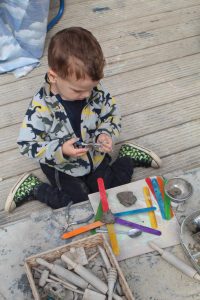

Music Is Inside Us
The importance of Music in Early Years
Albert Einstein once said-
‘If I were not a physicist, I would probably be a musician. I often think in music. I live my day dreams in music. I see my life in terms of music.'
The beauty of music is it doesn’t speak in words, it speaks in emotion. It is a joy shared equally by babies through to the elderly. At Inspirations, music and creativity is the language we learn through, and there isn’t an hour that goes by without the influence of music somewhere.
A study at the University of California Brain and Creativity Institute discovered that children and babies who are exposed to musical experiences have increased brain development and reading skills. They also found that learning to play an instrument can improve mathematical learning and numeracy. But of course the benefits of music covers far more than just academic achievements.
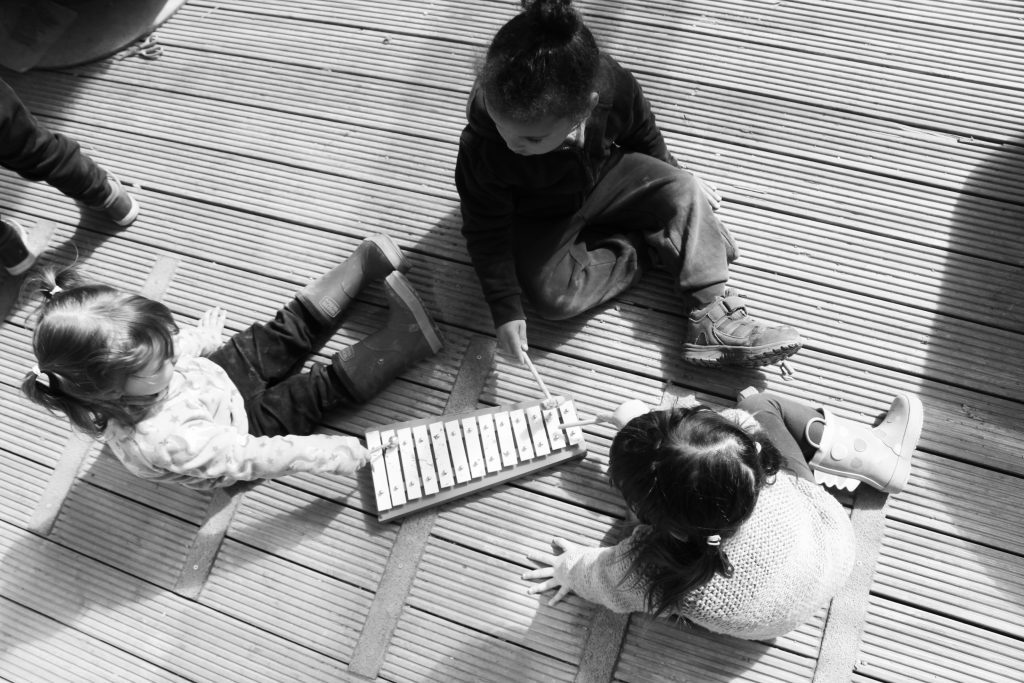
The many advantages of Music
Music brings joy. In our baby rooms the children learn their first sounds through song and rhyme. They build motor skills from movement and dance to music, as well as finding new ways to express themselves, and this only continues as they get older. As they move up from baby to toddler, and with the support from our Educators and Signing Sam they absorb new words and strengthen their memory skills. Through singing, dancing, music and instruments our little ones develop hand eye coordination, spatial awareness and balance.
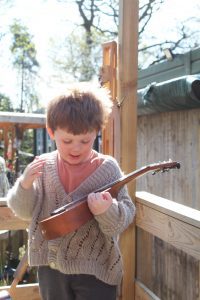
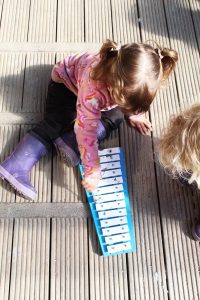
By the time our children reach pre-school they have had the chance to build up a repertoire or tunes and songs they’re now ready for some more advanced musical experiences. In the Art Studio we have daily ukulele sessions where the children learn to hold and strum, along with many other instruments. We make up and perform songs together or simply move to the sound of music and instruments. Naturally these experiences enhance our children's social skills and turn taking abilities but it also gives them a tool that is so important to take into their adult life- the ability better regulate emotions and control feelings.
Our carpet and choosing times are always accompanied by singing, one of our favourites in the Pre-school room is the Nigerian Greeting song 'Funga Alafia' with rhythmical clapping along side. Through song we can learn about diversity, cultures and widen our knowledge of language, the world, and our place within it. It also brings us all together in a shared moment of song.
https://www.youtube.com/watch?v=PDjgSoMTKpU
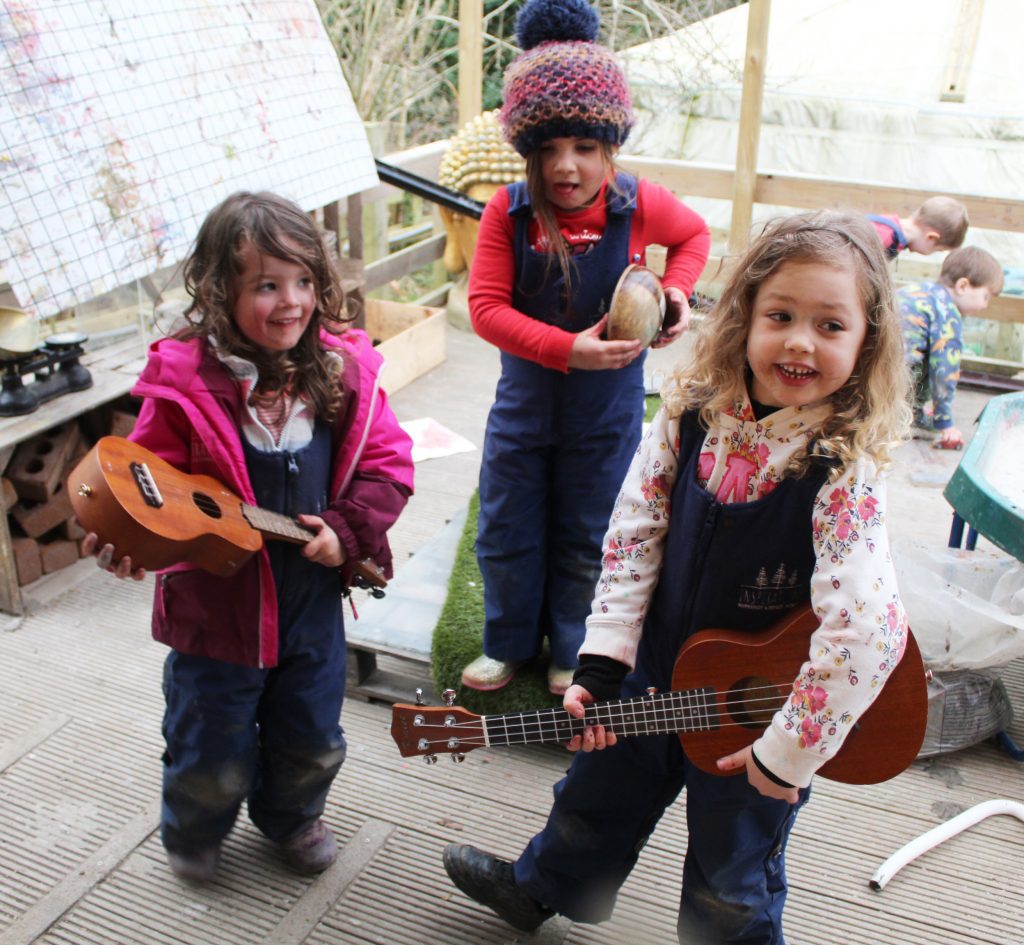
Music really is the key to bring us all together, but how can you bring more musical experiences into your daily home life?
- Take rhythmic instruments on outings to distract or focus them when needed
- Play orchestral music from YouTube
- Singing and dancing together- songs such as ‘Sleeping bunnies’
- Enrol onto a local music class
- Build your own shaker from yogurt pots and lentils
- Create drums from pots and pans
- Learn a dance routine
Gigs for our kids
Also keep an eye on Youth Anthems, who put on family friendly day time gigs and vegan food at Wharf Chambers, Leeds. Tickets to their next event 3rd July are on sale (free for under 18’s with a paying adult) and suitable for babies right up to adults. https://www.facebook.com/YouthAnthems/
Bring more music into your life, because after all, lifting our spirits is just one of the endless advantages it brings.
-Nathalie

Let’s shake up Education
At Inspirations nurseries we go the extra mile to ensure we are providing the children in our care a ‘second to none’ learning environment. Our ethos and pedagogy speak of children learning trough their interests, through nature and art, both independently and with their peers. Our environment is set up to encourage thought processing skills, logical problem solving and collaborating ideas to solve problems within small groups of friends and/or the adults supporting them.
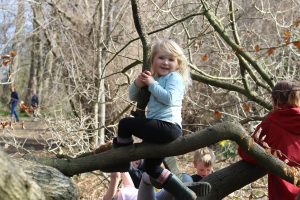
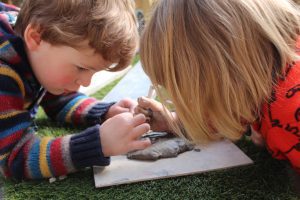
Our love of all thing’s nature encourages us to consider the planet and our impact on its future evolution. We recycle, upcycle and reuse and repurpose our waste as much as possible and discuss with the children our environmental impact wherever appropriate.
The time, care and commitment required to offer our children this rich varied learning environment is considerable, the rewards however, are clear to see in the faces of every one of our children. Their open, happy, faces, the intent with which they explore each developmental opportunity is the reason we, in this profession, do what we do, it’s pure joy.
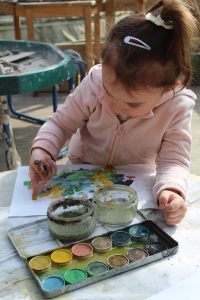
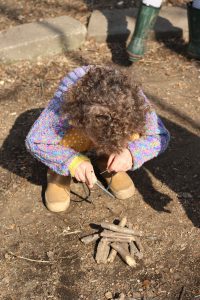
There is no doubt in my mind that the freedom of choice, the sense of open space and freedom, the ability to be autonomous in their learning experiences, to make their own choices and explore their own ideas is one hundred percent the reason that our children stand out in reception classes across our postcode as having the necessary ‘school ready skills’ (a term I abhor)!
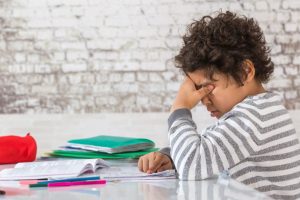
It therefore leaves me feeling deflated, saddened and to be honest a little angry on behalf our children that these foundational skills which should be built on and nurtured throughout their childhood, is ripped away by a school education system that is failing to ignite curiosity, lifelong learning skills and most of all, an enthusiasm to learn. Having had a child recently start school after attending Inspirations I can’t tell you how against the grain I have found the homework load, the testing at age five and above all, the change in my child’s engagement in her own learning. Her interest has waned, she is no longer skipping out to tell me what she has been doing… Why, because it has been inconsequential to her, it is something that has just happened, rather than something she has engaged with and in. She is no longer at the centre of her learning process. Testing teachers teaching skills has overridden the requirement (and every child’s right) to put them at the heart of their own learning and development.
Consider an alternative
It is my view that our current learning institution is failing in terms of both the children attending and the teachers teaching. Here at Inspirations, we have witnessed first-hand the uptake of teachers leaving the profession in recent years citing burnout and their personal loss of passion for a role that is no longer rewarding to them. I have always said that working alongside children is a vocation not a job, we need to foster the passion and autonomy of the people educating our children NOT beat them down and stamp them out. This is unfortunately the situation we are currently facing within schools across the UK.
The alternative then… Let’s consider a school environment that follows a similar ethos and pedagogy to Inspirations where children and adults collaborate together in environments that encourage lifelong learning experiences, where children feel free to learn though play where they can experiment, make mistakes and learn from them without feeling like they have failed or haven’t met pre prescribed arbitrary standards. ‘Standards’ which only serve to demoralise both the teachers and students.
Our school environments haven’t changed since their conception over a hundred years ago. I for one think it’s time for a new approach.
Do you agree?
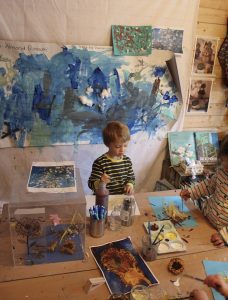
-Nicola
Settling into our Baby Rooms
In today's blog we take a look at the settling in process and key person allocations across our two baby rooms- The Hedgehog Room and The Butterfly room. There are many benefits to your child starting a childcare setting, it's a chance for them to develop additional social skills, learn new skills and gain independence away from their main carers. For this reason we ensure we create close bonds between our staff and your family, particularly between your child and their key person. But what is a key person?
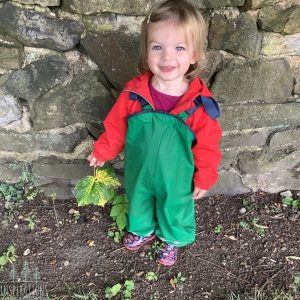 The importance of relationships
The importance of relationships
'Key person' is a term used a lot in nurseries and it a vital part of our nurturing setting at inspirations. The statutory frameworks (2017) states;
“Each child must be assigned a key person. Providers must inform parents and/or carers of the name of the key person, and explain their role, when a child starts attending a setting. Children thrive from being a part of loving and secure relationships. Children learn best when they are healthy, safe and secure, when their individual needs are met, and when they have positive relationships with the adults caring for them”.
Prior to starting Inspirations, we offer a home visit, a chance for your key person to visit a few weeks before your child's start date. This is an opportunity to tell us all about your child but also a chance for you to ask questions. This will be followed by a series of settling in visits at our setting as follows-
- 1 hour with parent or carer
- 1 hour on their own
- Longer visit including Lunch or sleep
- Last visit including lunch and sleep
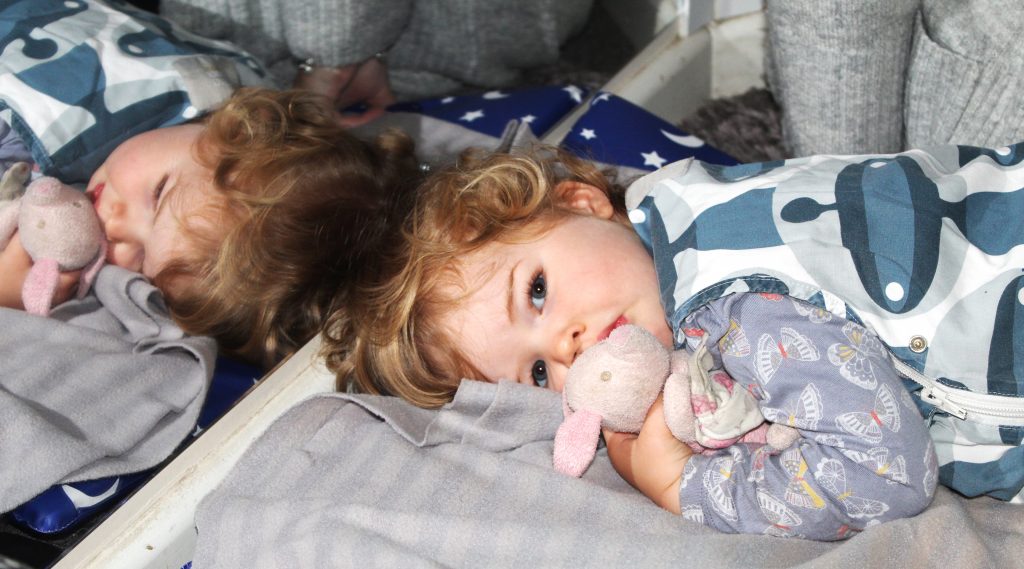
During the first session, the key person will spend time with the child and the parent; a general 'getting to know you' session. We will ask you to complete a ‘starting points’ sheet to show us what your child is currently doing and how we can meet their needs. We will also discuss sleep patterns, eating and conversations about your families and any festivals celebrated, religions or dietary requirements. By following your child’s individual routine will help them feel safe and secure, and create a home away from home. 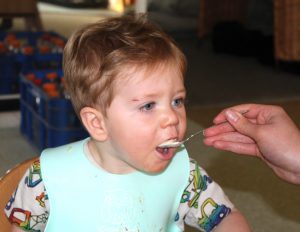 We are proud of our strong partnerships with parents and ensure we welcome you and your family into our Nursery and Forest School community.
We are proud of our strong partnerships with parents and ensure we welcome you and your family into our Nursery and Forest School community.
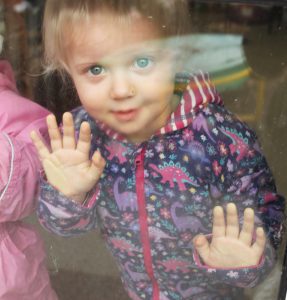 Positive relationships is one of the overarching principles of the EYFS. It’s important to form positive relationships with the children and role model the importance of 'making relationships' with others too.
Positive relationships is one of the overarching principles of the EYFS. It’s important to form positive relationships with the children and role model the importance of 'making relationships' with others too.
The Importance of Attachment
The attachment theory originates from the work of John Bowlby (1958). He wanted to look more in depth at the importance of the child’s relationship with their mother in terms of their social, emotional and cognitive development. He formulated his theory surrounding a link between early infant separation with the mother and later mental health problems. Bowlby proposed that attachment with a caregiver provides safety and security for an infant. Within his theory, it is suggested that between 0-5 years old is a critical period of time to form attachments with care givers and forms a secure base for children when exploring the world. Attachments are emotional bonds that children develop with parents and other carers such as their key person at nursery. It is thought that children who have secure attachments cry less when separated, they engage in more pretend play and have a strong sense of who they are. The settling in visits we offer are to support the attachment theory and help the children start to form those attachments with their key person and even the other adults and children in the room.
The home visit and the first visit with the parent is vital to show the children that the parent trusts this new person in their life and they can role model a positive relationship through talking about your children.
If you have any other questions about our baby room settings please don't hesitate to get in 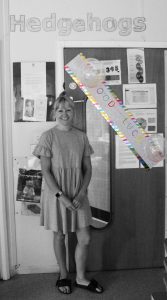 touch at 0113 2585800 then follow the extension to either the Office, The Butterflies or The Hedgehogs.
touch at 0113 2585800 then follow the extension to either the Office, The Butterflies or The Hedgehogs.
This week we are excited to announce Sophie will be our new Room Leader of The Hedgehogs room, as Tara moves on to her new role as Training Manager after 17 years of running the Baby Room. We wish them both well in their exciting new roles within our Nursery.
Toddler's Forest School Garden
Measured Risks and The Great Outdoors
Getting outdoors could not be more important right now, and the health benefits that come with it are not only beneficial but fundamental to our wellbeing. But are the youngest members of our society getting enough outdoor adventurous play? Recent studies suggest not. 85% of parents admit they would like their children to have more adventure, whilst 44% admit they played outside more as a child then their own children do. Indeed this is a sign of the times and sometimes children miss out on these opportunities due to safety worries.

At Inspirations you can rest assured that your children are getting more than their fair share of outdoor play. Our outdoor areas are of equal, if not more importance to our indoor spaces. The 2-3 age group is where our children are first introduced to a designated forest school area in addition to their outdoor area.
Our toddler room garden is an extension of their classroom, filled with repurposed objects and areas that support the many types of schemas as mentioned in the previous blog. There are balancing beams, planks, crates, small world areas to support interests, and many more. It is here we make use of the larger loose parts and ambiguous resources such as milk crates, planks and go kart wheels. We have an open doors policy so in all weathers our toddlers have access to the outdoors.
Raising Confident Learners
Not all children have easy access to nature, so it's important we offer this space from a young age. But why is it important for young children to experience adventurous play?
In 2019 we gained planning permission to extend our toddler room garden and build a Forest School Area. This zone is opened up with increased staffing and introduces the children to more adventurous play, with tracks, steps, netting, hills and trees to explore and climb.
Providing this access opens up valuable experiences they may not get elsewhere. As their brains are forming, growing and changing every minute these measured risks they are exposed to supports healthy boundaries and emotional and physical development. This purpose built area means children are using core muscles, with hills to mount and areas to climb. The uneven ground tests and strengthens their vestibular balance skills and coordination.
Whilst children navigate this recently developed area we encourage them to safely create their own boundaries, trial ways of movement, and learn to just keep trying. Instead of suggesting how to use the area, we as educators will avoid giving direction but instead ask open ended questions. 'I wonder where you'll go next?' or 'wow that looked really hard, and you didn't give up'. By focusing on questions and observations rather than just praise and direction we are building our toddlers inner confidence that sets them up for life.
By creating dens between the trees, growing lavender and scaling balance beams, having this little taste of adventure prepares our toddlers for Forest School when they move to Pre-school ....and beyond.






Being Two- What are Schemas?
Welcome to part two of our focus on Being Two. This week we take a look at schemas, what they are, how our toddler room supports them, and ways to support this at home.
Have you made a cup of tea today, switched a light on, picked a pen off the floor and moved it to a flat surface to avoid it rolling off again? Then you have used schemas today without even realising it.
 A schema, put simply is like a mental model, a set of instructions we act out in our brain based on what has been successful in the the past. Whilst we come across schemas every time we learn something brand new, as you can imagine this happens the most at 2 and 3 years old.
A schema, put simply is like a mental model, a set of instructions we act out in our brain based on what has been successful in the the past. Whilst we come across schemas every time we learn something brand new, as you can imagine this happens the most at 2 and 3 years old.
Our toddler room is a HUB of schemas and is filled with opportunities to create these brain connections.
If I hit this will it break?
Whilst in may appear our little ones are rampaging through rooms causing chaos perhaps it helps to change our perspective and remember they are simply creating cognitive blue prints that set them up for life.
What happens if i drop this? Does this bounce? If I hit this will it break?
The Main Types of Schemas
Below are some examples of Schemas and how they are supported within the provision:
- Transporting – Moving objects or themselves from place to place. Moving things
with their hands. Bags, pots, pans, containers, sad. - Rotation – Turn and rotate objects or themselves. Roll their bodies, playing with toys
that spin, twist, and turn or even ride bikes. They could use Tyres, Wheels, Cable
reels and cars to explore this interest. - Enclosing – Join lines or build structures with objects such as bricks, magnets, or
malleable materials to form enclosures/models. - Connecting – Joining things together, fastening or tying things. Separating or
disconnecting construction etc. - Positioning- Our loose parts ethos lends its self well to this schema, lining things up, ordering different sized objects.
- Enclosing or enveloping- There is always a large cardboard box on the go in our toddler room setting for the children to climb into. But this can also be seen with sand or soil or fabric.
- Transforming- Messy play- gloop, water trays, mark making



I have attached a link that details further Schemas and how you at home can support these at home.
http://www.flyingstart.uk.com/wp-content/uploads/2014/08/Schema.pdf

Being Two
This Month we are focusing on our middle room at nursery, the toddler room, also known as our Honeybees room. Being two is more commonly referred to as the ‘Dreaded Twos’ or ‘Terrible Twos’; a term we find very unjust and instead celebrate this age with the phrase ‘Terrific Twos'.
Terrific Twos
It is very easy to conclude that your Toddler is in the midst of the ‘Terrible two’s’ when they act up and try push your buttons, especially when you are faced with patience testing tantrums.
It is important to remember that they are experiencing so many emotions and ultimately navigating their way into becoming tiny humans. They do not mean to drive you to the bottle of wine sat in your fridge, they are just growing and learning whilst showing you who they are and that being two really is terrific.
Adventure and Independence
In our eyes being a two year-old is about adventure and independence, traits we
feel are continuing to shape them after the transition from Baby to Toddler.

The Toddler room, or the Honeybee’s room as we refer to it is set up to allow the above,
and is a large area both indoors and out to move around freely, with many areas of
provision to explore and investigate. Whilst these areas are being slowly destroyed by tiny
hands and feet, friendships are being formed, and language is continuing to develop by
using simple sentences to share feelings, experiences and thoughts. They become more
aware of others feelings, and they are starting to understand boundaries and routines, as
well as listening with interest and understanding simple questions.
Milestones - Potty Training
Being Two also comes with it's challenges and a certain milestone is often met during this
period of their lives… Potty Training! Early signs that they may be transitioning
to this stage include awareness and communication. From telling you that they have done
something in their nappy to expressing the urge to go, these are all clear indictors that the
time is right and you should go with it and know that we are always their to support you. Remember that children develop at their own pace and they may not be ready to be potty trained until later.

Here are some links to books and tips for support-
https://www.amazon.co.uk/s?k=potty+training+books+for+toddlers&crid=BLJ3UFJL3K9O&sprefix=potty+training+%2Caps%2C192&ref=nb_sb_ss_ts-doa-p_3_15


Children are not things to be moulded, but people to be unfolded- Jess Lair
Next week we will focus on the importance of schemas, with some tips to supporting young children's language development. In the meantime if you've had a tough day, you've passed bath time and skipped straight to bedtime, you're still doing a great job. Remember it is this age that children are making new connections in their brain, pushing boundaries and learning vocabulary at rapid speed. We have to give credit to them for all this multitasking, whilst keeping our silliness alive, reigniting our imagination, and providing daily entertainment.
Although there can be some hard times amongst the great times if we start to see the world through their perspective we might all agree that life as a toddler can be challenging but also very fun.
-Ashleigh
